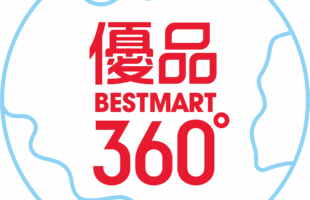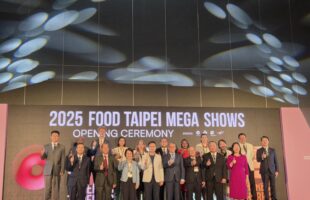
Courtesy of The Asia Food Challenge
Key summary
- Agri-food accounts for over a third of global carbon dioxide equivalent emissions, second only to energy. This dynamic is even more pronounced in some regions in Asia, such as South and South East Asia, where it is up to 50 percent of total emissions.
- There is the potential to reduce carbon dioxide equivalent emissions from agri-food in Asia by 12 percent (equivalent to 840 Mt CO2e) ahead of 2030. This is equivalent to the total emissions produced by the global aviation industry in 2022.
- This can be done using more than 20 readily available technologies and practices, allowing fast action. To do so would require an investment of approximately US$125bn in farm-level equipment and machinery on rice and cattle farms, in addition to wider investment in infrastructure and other farm types.
PwC, Rabobank, Temasek, and Terrascope launched the third edition of the biennial Asia Food Challenge Report, which focused on the opportunity to decarbonise the agri-food value chain in Asia. The report identified a combination of over 20 readily available technologies and practices that can have an immediate impact in the sector with the potential opportunity to achieve an approximately 12 percent reduction in carbon dioxide equivalent emissions from Asia’s agri-food sector (equivalent to 840 Mt CO2e).
This scale of reduction will require approximately US$125bn of investment in farm-level equipment and machinery on rice and cattle farms, in addition to wider investment in infrastructure and other farm types. Crucially, it will also require stakeholder alignment to measure Scope 3 emissions and improve sources of incentivisation for some technologies and practices.
The investment opportunity is particularly apparent in the supporting technologies, such as micro-irrigation to support changing rice cultivation practices, on-farm machinery suited to the Asian agri-food landscape of smallholder farms, and digital smallholder engagement platforms – which provide advice, inputs, and financing to farmers, amongst other things.
The high technology readiness level of the technologies addressable to agri-food means this can be done today and should be prioritised for investment over a longer time frame. Agri-food has the potential to represent a better carbon return on investment than other sectors, such as energy, which is more dependent on technological advancements in engineering and chemistry, as barriers to action are largely financial and social, which we have a greater potential to overcome in the near-term.
Summary Points from the 2023 Asia Food Challenge Report
The opportunity for decarbonisation in Asia’s agri-food sector
- Agri-food is a significant source of carbon dioxide equivalent emissions globally, accounting for approximately 34 percent of all carbon dioxide equivalent emissions. Agri-food emissions are significant across Asia – Asia is responsible for approximately 42 percent of all agri-food emissions globally despite only being home to around 35 percent of arable land, and in parts of South East and South Asia, agri-food accounts for 50 percent and 45 percent of all carbon dioxide equivalent emissions respectively.
- There are multiple geographical, environmental, social, and political reasons for such a high proportion of emissions from agri-food. These reasons include the high number of smallholder farmers, which can be less efficient than large, mechanised farms; the importance of rice in Asia; and the focus of historical investment into technologies and machinery designed for Western mega-farms that may not be applicable to the Asian agri-food sector.
- Around half of the carbon dioxide equivalent emissions in Asia are from five key emissions areas: rice cultivation, fertiliser use, rearing of ruminant livestock and swine, food loss and waste, and deforestation.
- There are more than 20 technologies and practices that are available today to address this. Together, these technologies and practices have the potential to reduce carbon dioxide equivalent emissions in the Asian agri-food sector by approximately 12 percent by 2030 – a reduction of nearly 840 Mt CO2e emissions – if all stakeholders take action. This is equivalent to the emissions from the entire global aviation industry in 2022.
Investing in actionable technologies
- Implementing the technologies and practices we have identified across just rice and cattle farms in Asia would require US$125bn of investment in physical farm-level technologies and assets, in addition to wider investment in infrastructure and other farm types.
- This investment has the potential to improve farm-level gross margin by up to 16 ppt.
- The investor opportunity is particularly apparent in the supporting technologies, such as micro-irrigation to support changing rice cultivation practices, on-farm machinery suited to the Asian agri-food landscape of smallholder farms, and digital smallholder engagement platforms – which provide advice, inputs, and financing to farmers, amongst other things.
Agri-food has the potential for significant emissions reduction quickly vs. other sectors
- These actionable technologies and practices should be prioritised over those at a lower level of technological readiness that may have an impact in the future. Action ahead of 2030 is particularly important given any reduction in emissions will have an outsized impact in meeting climate change targets.
- To date, agri-food has received less focus on emissions than other large emissions areas like energy – this needs to change if the world is to meet its decarbonisation targets.
- The forecast reduction in emissions from agri-food requires significantly less investment than is required to have the equivalent impact in reducing emissions from the energy or aviation sectors.
- Additionally, the limiting factors in reducing carbon dioxide equivalent emissions in agri-food are largely social and financial – the technologies and practices exist to have an impact today. This is not the case in the energy sector, which requires engineering and technical advancements to reduce emissions in many cases.
Engagement of stakeholders across the value chain
- Many of the actions need to be taken at the farm level. The prevalence of smallholder farms in Asia means stakeholders need to consider how best to support smallholders to make this transition. To do so needs actions from all stakeholders – government, large corporations, investors, academic institutions, farmers, and consumers.
- This is not just a smallholder farmer problem. Large corporations are increasingly under focus to act on their Scope 3 emissions, including indirect emissions in their value chain. Lower emissions can also mean lower costs (e.g., from less fertiliser used) or more revenue (e.g., by extracting value from waste), which adds another incentive to act now.
Quotes from the authors
Richard Skinner, Asia Pacific Deals Strategy & Operations Leader, PwC Singapore, said: “One of the exciting things about the 20 technologies and practices the report identifies, is the added ability to improve the profitability of businesses across the supply chain, with many of them also representing significant investment opportunities. For example, these actions could improve the gross margin of a rice farm by up to 16 ppt, e.g. by using inputs (such as fertiliser) more efficiently, extracting value from side streams, or boosting yield. The investment opportunity comes from the technology and infrastructure these practices require, such as micro-irrigation to support changing rice cultivation practices, technology to support the variable rate application of farming chemicals, and storage infrastructure with continuous cold chain. There is further opportunity in the emergence of digital platforms, which are enabling farmers to access new markets and better inputs, and allowing big food organisations to work with the farmers growing the food to tackle their emissions.”
Anuj Maheswari, Head, Agri-food, Temasek, said: “Decarbonising Asia’s agri-food sector is critical to reduce the effects climate change has on our food resilience. To do so, we need to prioritise the deployment of existing, readily available, and actionable solutions that can be scaled across the agri-food value chain and channel capital to catalyse the technology to accelerate decarbonisation in Asia and globally. This will enable the transition towards a greener and more sustainable agri-food system so every generation prospers.”
Rabobank’s Asia Head of RaboResearch Food & Agribusiness, Dirk Jan Kennes, commented: “There is a huge opportunity to improve Asia’s agricultural output per hectare by investing in technology, sharing best practises and assisting smallholders in adopting technology and best practises. This not only increases food production per hectare or per animal but it also contributes to decarbonisation in food production, which is vital for Asia’s road to net zero. Helping farmers to finance the adoption of technologies to decarbonise food production is critical for successful reducing the carbon footprint of our food system.”
Maya Hari, CEO of Terrascope said: “The complex and fragmented nature of food & agriculture value chains makes emission measurement, decarbonisation and green innovation of this sector particularly challenging. Integrating the quantum and urgency of change with technologies such as machine learning and AI brings precision and speed to creating reliable emissions baselines and reduction forecasts. This enables companies to plan impactful decarbonisation initiatives by identifying critical areas in their value chain that result in the highest emission reduction.”
About the authors
About PwC
At PwC, our purpose is to build trust in society and solve important problems. We’re a network of firms in 151 countries with over 364,000 people who are committed to delivering quality inassurance, advisory, and tax services. Find out more and tell us what matters to you by visiting us at www.pwc.com. PwC refers to the PwC network and/or one or more of its member firms, each of which is a separate legal entity.
Please see www.pwc.com/structure for further details.
About Rabobank
Rabobank is a Dutch cooperative bank and one of the largest financiers in the global food industry and agriculture. Enabling the change to a more sustainable food supply chain by working together is core to our mission of growing a better world together’. We aspire to bridge the gap between “food” and finance” by providing access to our extensive food & agri knowledge, networks in 37 countries, and financial solutions. Our efforts are focused on addressing the four most pressing food issues: increasing food availability, enhancing access to food, promoting balanced nutrition, and increasing stability of food supply chains. Rabobank Group, when measured by Tier 1 capital, ranks among the world’s largest financial institutions and enjoys high credit ratings from all rating agencies, and is ranked by Sustainalytics in the Top-5 best performing banks in environmental, social, and governance (ESG).
Read more about Rabobank at www.rabobank.com
About Temasek
Temasek is a global investment company with a net portfolio value of S$382 billion (US$287b) as of 31 March 2023. Its Purpose, “So Every Generation Prospers,” guides it to make a difference for today’s and future generations. As an active investor, forward-looking institution, and trusted steward, it is committed to delivering sustainable value over the long term. Temasek has overall corporate credit ratings of Aaa/AAA by rating agencies Moody’s Investors Service and S&P Global Ratings, respectively. Headquartered in Singapore, it has 13 offices in 9 countries around the world: Beijing, Hanoi, Mumbai, Shanghai, Shenzhen, and Singapore in Asia; and London, Brussels, Paris, New York, San Francisco, Washington DC, and Mexico City outside Asia.
For more information on Temasek, please visit www.temasek.com.sg
About Terrascope
Terrascope is an end-to-end decarbonisation SaaS platform that enables enterprises to measure and reduce their Scope 1, Scope 2, and Scope 3 emissions. Terrascope is an AI-assisted platform that leverages data science, machine learning, and sustainability expertise to aid large companies in decarbonising both their business operations and supply chains, guiding them on their net zero journeys.
Publicly launched in June 2022, Terrascope works with customers across sectors, from agriculture, food & beverages, manufacturing, retail, and luxury to transportation, real estate, and TMT. Globally headquartered in Singapore, Terrascope operates in major markets across APAC and EMEA and is a partner of the Monetary Authority of Singapore’s ESG Impact Hub. Learn more at https://www.terrascope.com/








